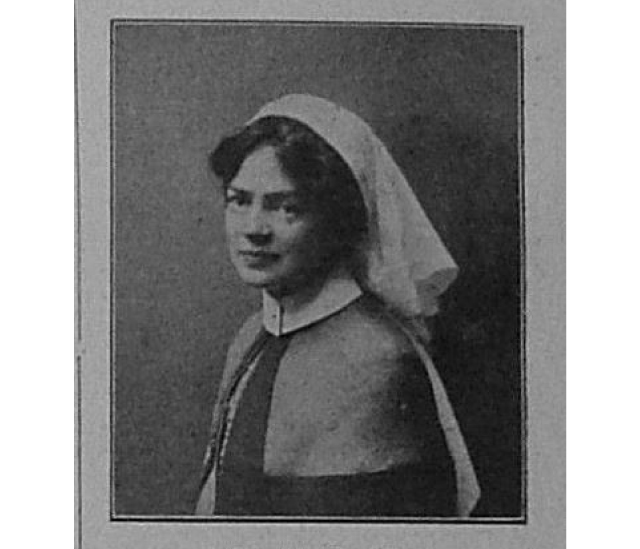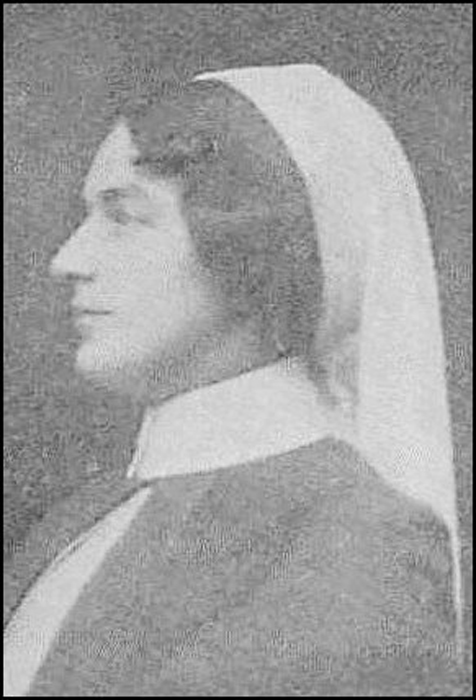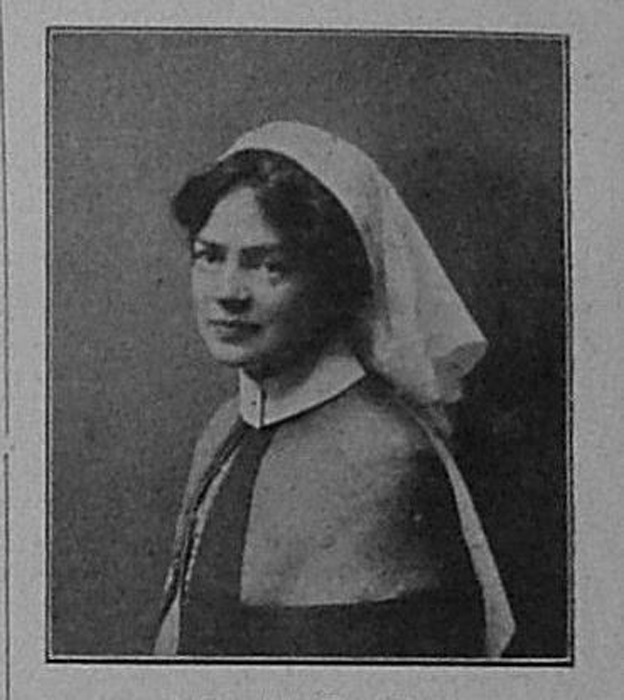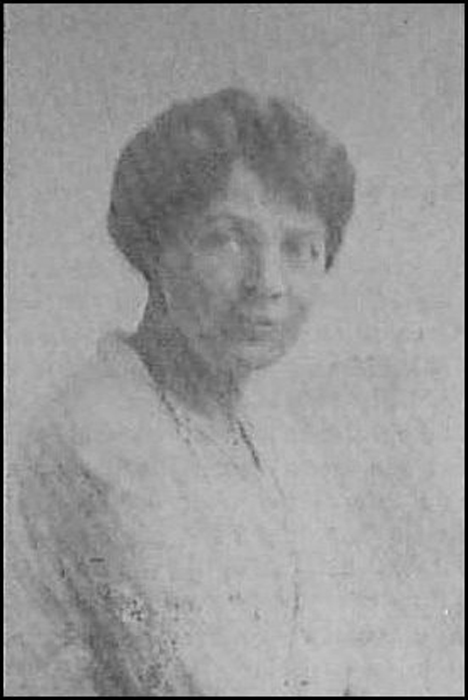During the First World War, many women across the country chose to support the war effort by becoming VAD nurses, while those who were already qualified nurses immediately offered their services.
In Bexhill, the Bray family included three qualified Nursing Sisters whose service in the First World War was recognized in the Bexhill Observer of 4 August 1917. They were Evelyn, Ethel and Mary Bray. They were the daughters of Alderman John Bray, auctioneer estate agent and founder of John Bray & Sons. They were already qualified and experienced nurses by 1914. Ethel Bray was also a trained masseuse.
Evelyn and Ethel both served in the arena of war close to the Front lines and were recognised for their courage and dedication. Evelyn was awarded a Royal Red Cross medal and Mary served at a large hospital for wounded soldiers in Northumberland, and was active in setting up a hospital for the wounded in London.
Sister Ethel Bray joined the Queen Alexandra’s Imperial Military Nursing Service, (QAIMNS), in August 1914 and went rapidly from No.2 General Hospital, Colchester, to France with Dame Maud McCarthy’s party and by December, joined H.M. Hospital Ship Asturias. In February 1915, the ship evaded attack by a German submarine whilst bringing wounded soldiers back from France. Ethel reported “Torpedo was not three feet away from us”. She claimed to be “not at all nervous” and continued to serve on Hospital Ships aboard H.M.H.S. Nevasa in the Dardanelles until having completed “a sea mileage of 70,000.”
On applying to remain on the QAIMNS reserve after demobilisation, her military record reads “Recommended for exceptional service and devotion to duty whilst serving in the H.M. Hospital Ship Nevasa M.8. F. in Gallipoli from August to December 1915.” From 1917 she was in charge of a Military Hospital in Ipswich. She remained on the Reserve until 1937 aged 58. Her taste for nursing afloat also continued in her civilian life aboard P&O liner, Narkunda, from 1929 to 1937.
Her sister Cicely Evelyn Bray, known as Evelyn, trained at the Poplar Hospital, London and joined the QAIMNS in 1914. She was posted to Royal Herbert Hospital, Woolwich and by 1916 when she was awarded the Royal Red Cross Medal, she was in charge of the operating theatre there. In October 1917, she was posted to a casualty clearing station and was reported to be the Acting Assistant Matron. By May 1918, she was Sister-in-charge of the Surgical Hut of a hospital in Rouen, where one of her patients included Private Ransom of Bexhill, who had been admitted to the Surgical Hut mortally wounded. She wrote a letter of condolence to his mother saying “I am so sorry to have to tell you this. How dreadful it is for you mothers, all losing your gallant sons”. In the same month, Evelyn was also mentioned in dispatches (meaning her name appeared in an official report written by a superior officer and sent to the high command, in which her meritorious action was described).
While in Rouen, Evelyn met an officer in the Royal Flying Corps called Alfred Guy Garrod, known as Guy, who would become her future husband. He was later to become Air Chief Marshal Sir Guy Garrod, M.C., D.F.C. Evelyn and Guy married at the Garrison Church, Rouen in September 1918. A formal portrait of Sir Guy Garrod can be seen on the BBC Your Paintings web site.
Unfortunately, less is known about their sister Mary Bray. In February 1918, she married Captain Edward Clayton of Cricklewood at St Peter’s Church Bexhill, and the Bexhill Observer reported “For a great part of the year 1915 she assisted at a large Government Hospital for wounded sailors and soldiers in the north of England. For a year and a half she has been in working charge of an improvised hospital in London for wounded officers.”
Transcriptions of many of the Bexhill Observer reports from the War years and QAIMNS records used to research the Bray Nursing Sisters can be seen in the Access Centre at Bexhill Museum.
This story was submitted by Di Knell, WW1 Research Group Volunteer for Bexhill Museum











